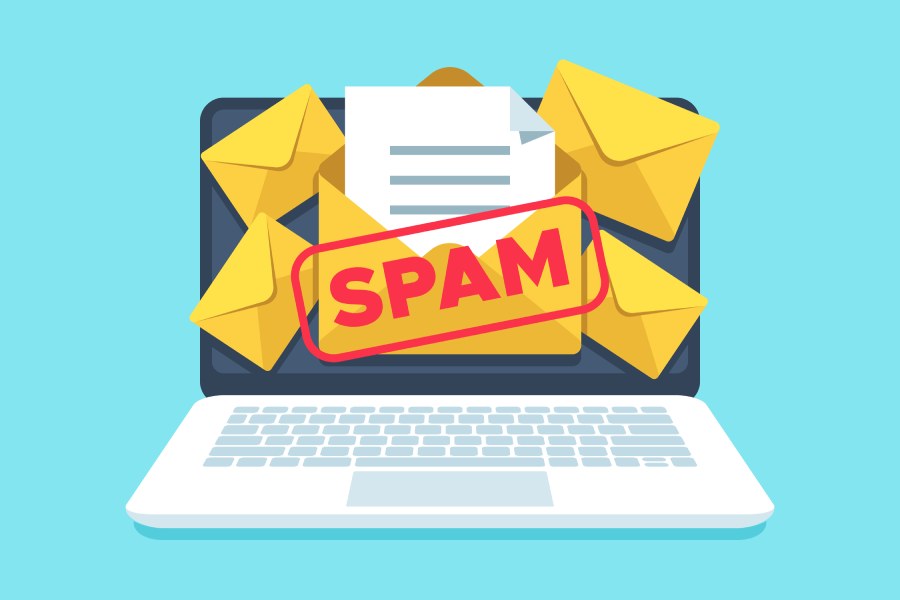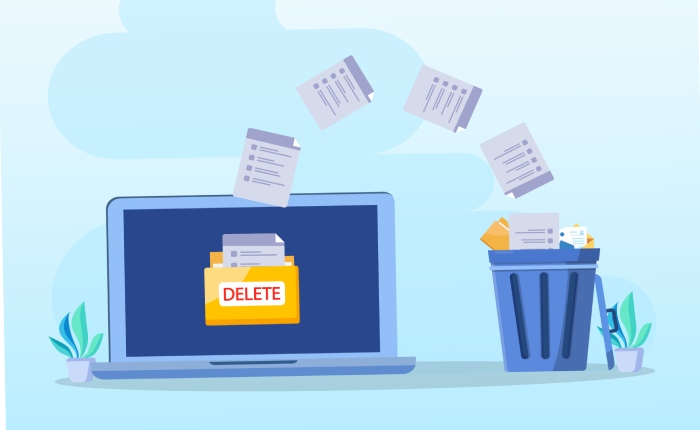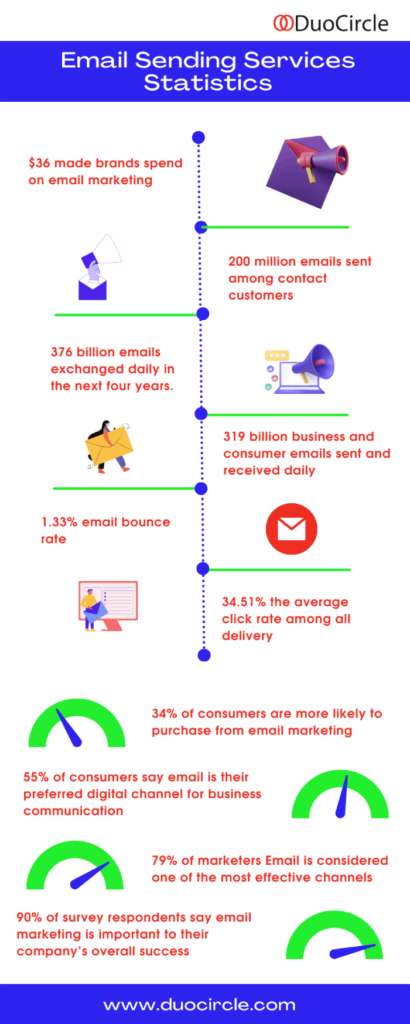Spam filters are a critical aspect of email marketing. This text provides a comprehensive understanding of how spam filters work and how to avoid spam filters to increase the success of your campaigns and reach your target audience effectively.
In today’s digital age, email remains an indispensable communication tool for businesses of all sizes. However, the constant influx of unwanted spam messages has resulted in the development of increasingly sophisticated spam filters, making it essential for businesses to understand how they work and how to avoid triggering them. This article shares a comprehensive overview of the mechanisms behind spam filters and offers practical strategies for ensuring your emails are delivered to the inbox where they belong.
How do Modern Spam Filters Work?
Spam filters are present to keep unsolicited emails out of an individual’s email inbox. In the past, they relied on identifying specific keywords or phrases commonly found in spam messages. However, modern spam filters use a combination of advanced techniques to determine if an email is a spam.
One of these techniques is machine learning, which uses data analysis to identify patterns and characteristics commonly found in spam emails, such as the sender’s email address, subject line, email content, and structure.
Another technique spam filters use is feedback loops, allowing users to mark emails as spam, which then informs the spam filter and helps it learn what type of emails are considered spam by the user.
Today, email providers like Gmail, Yahoo, and Outlook have improved their methods. They now consider past user engagement and interactions with the sender’s emails to determine if the latest email should reach the inbox. Let us see some signals you need to keep in mind when it comes to email marketing
Good Signals
- Open rate: Frequently opened emails are seen as not being spam and increase the chance of reaching the inbox.
- Replies: Responding to emails is considered a positive signal and improves the sender’s reputation with the email provider.
- Not junk: Moving an email out of the junk folder is a strong signal of relevance and worthiness in the inbox.
- Folder placement: Emails moved to specific folders by the recipient indicate interest, increasing the chance of future emails reaching the inbox.
- Address book: Adding the sender’s email to the address book shows interest in future emails.
Bad Signals
- Junk folder: Moving an email to the junk folder strongly signals that the email is spam.
- Deleted without opening: Quickly deleting an email without opening it.
These factors give the sender two scores:
- Individual subscriber score: Based on the recipient’s actions with the sender’s emails.
- Email provider score: Based on most of the provider’s users’ actions with the sender’s emails.
Email providers consider both scores when determining if an email should reach the inbox. Even if an individual subscriber has a positive history with the sender, if the email provider’s reputation with the sender could be better due to many users marking the emails as spam, the email will not reach the inbox.
How to Avoid Spam Filters and Send Better Emails
Here are some pointers that can help you avoid spam filters and achieve better results with your email marketing campaigns:
1. Avoid Classic Spam Triggers: While spam filters have become more complex, keywords still play a role, especially for more detailed filters. People associate particular words and phrases with spam, so try to avoid using classic spam trigger words like “free” or “discount” in subject lines and email content. Focus on offering value and sounding natural.
2. Only Email Opted-In Subscribers: Don’t use a purchased email list, as this cold approach will harm more than help. If the emails aren’t relevant to the recipient, there’s a high chance they’ll be marked as spam. Instead, only send emails to those who have explicitly opted-in.
3. Use Segmented Campaigns: Segmentation helps ensure your emails are delivered to interested recipients and reduce the risk of marking them as spam. Target emails based on demographics, interests, and behavior, making them more relevant and less spam-like
4. Limit Email Frequency: Overloading subscribers’ inboxes with emails daily erodes trust and may lead to unsubscribing or marking it as spam. Send 1-2 emails per week, adjusting frequency based on audience engagement.
5. Encourage Subscribers to Add You to Approved Contacts: Asking subscribers to add you to their approved contacts in their email clients will increase the chances of your emails reaching their primary inbox. Approved contacts are those subscribers who confirm they want to receive emails from you, avoiding marking them as spam or promotions, also boosting your email domain authority. Consider including instructions in your email signature or sending a follow-up email after someone subscribes to your list with a clear call to action.
6. Make Your Content Engaging and Valuable: The ultimate goal of email marketing is to have people open and act on your emails. Ensure your content is engaging, valuable, and enticing, making people want to open it. Quality content reduces the risk of being marked as spam by modern spam filters. Proofread your emails to ensure they are well-organized, easy to read, relevant, and engaging to your audience.
7. Send Emails at Optimal Time: Timing also plays a role in determining if an email will be marked as spam. Research shows that midweek or mid-day (Tuesday and Thursday in the late morning or early afternoon) is the best time for sending emails, as people are most likely to check their inboxes and engage with your content. Avoid weekends and holidays when people are less likely to check their inboxes. Note that the best time may vary depending on your target audience and segments.
8. Regularly Update Your Content: Updating your marketing content regularly is an advanced tip because many marketers need to pay more attention to the importance of updating long-standing campaigns. Sending the same email repeatedly to hundreds of contacts over months or years can make spam filters detect it as repetitive and unengaging, leading to penalties on your automated campaigns. To avoid this, aim to update your content with new images, copy, headlines, and offers at least once a quarter or, better yet, once a month. Using a photo editor can help you refresh images quickly by adjusting colors, cropping, or adding text overlays to match your latest campaigns.
9. Maintain a Good IP and Domain Reputation: Your email IP address and domain reputation significantly determine the trust assigned to your emails by spam filters. A good IP and domain reputation will increase email deliverability and reduce the chances of being marked as spam. To maintain a good reputation, send a consistent, relatively low email volume, keep your email list clean and up to date, and use email authentication methods such as SPF, DKIM, and DMARC.
10. Stop Stressing About Double Opt-In: The use of double opt-in for email marketing has both fans and detractors. While some argue that it adds positive friction and leads to higher-quality leads, others claim it adds negative friction and decreases the size of your email list. Whether you use single or double opt-in may not significantly impact whether your emails get marked as spam. Instead, focus on essential factors such as the quality of your content and segmentation.
Final Words
Spam filters are critical in ensuring email security and providing users’ clutter-free and productive inbox experience. By understanding their workings and using best practices in your email campaigns, you can effectively avoid getting caught in the spam folder and ensure your emails reach your intended audience.
Whether you are just starting with email marketing or looking to optimize your existing campaigns, these tips will provide you with the information and insights you need to succeed.


